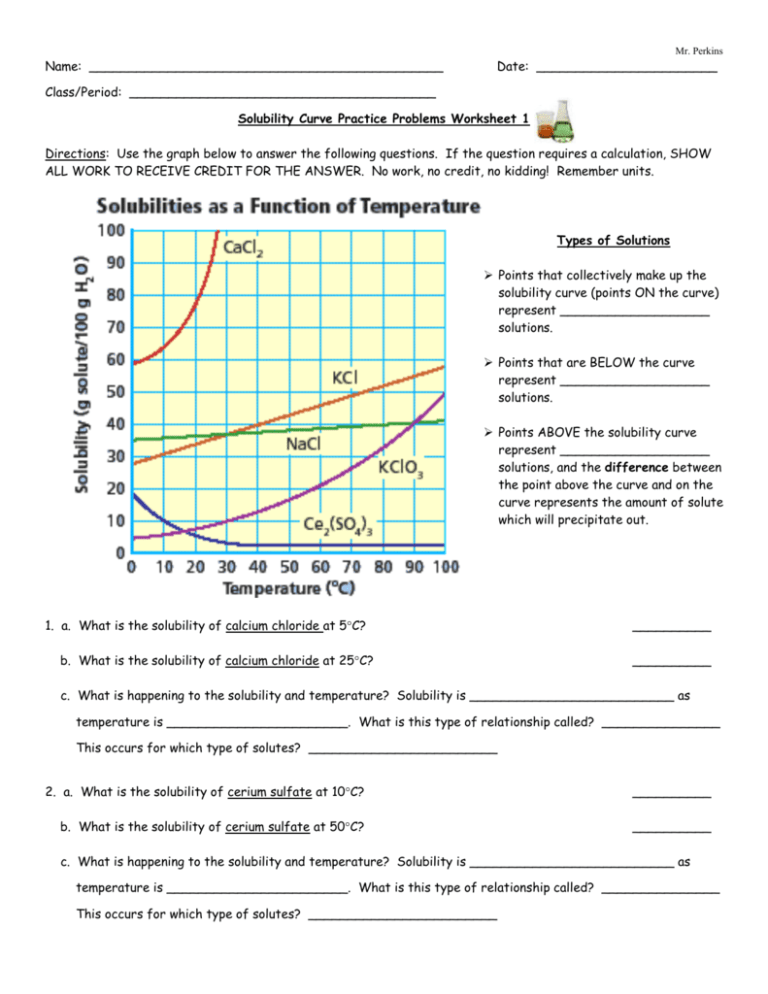Solubility Curve Practice Problems Worksheet
advertisement

Mr. Perkins Name: _____________________________________________ Date: _______________________ Class/Period: _______________________________________ Solubility Curve Practice Problems Worksheet 1 Directions: Use the graph below to answer the following questions. If the question requires a calculation, SHOW ALL WORK TO RECEIVE CREDIT FOR THE ANSWER. No work, no credit, no kidding! Remember units. Types of Solutions Points that collectively make up the solubility curve (points ON the curve) represent ___________________ solutions. Points that are BELOW the curve represent ___________________ solutions. Points ABOVE the solubility curve represent ___________________ solutions, and the difference between the point above the curve and on the curve represents the amount of solute which will precipitate out. 1. a. What is the solubility of calcium chloride at 5C? b. What is the solubility of calcium chloride at 25C? __________ __________ c. What is happening to the solubility and temperature? Solubility is __________________________ as temperature is _______________________. What is this type of relationship called? _______________ This occurs for which type of solutes? ________________________ 2. a. What is the solubility of cerium sulfate at 10C? __________ b. What is the solubility of cerium sulfate at 50C? __________ c. What is happening to the solubility and temperature? Solubility is __________________________ as temperature is _______________________. What is this type of relationship called? _______________ This occurs for which type of solutes? ________________________ Mr. Perkins 3. What is the mass of cerium sulfate that will dissolve in 50. g of water at 10C? __________ 4. What is the mass of potassium chloride that will dissolve in 250.0 g of water at 70C? __________ 5. a. At 90C, 10 g of potassium chlorate is dissolved in 100. g of water. Is this solution saturated, unsaturated, or supersaturated? ________________ b. How do you know? 6. A saturated solution of potassium chlorate is dissolved in 100. g of water. If the saturated solution is cooled from 90C to 60C, how many grams of precipitate will be formed? __________ 7. Which substance on the graph is least soluble at 10C? __________ 8. Which substance on the graph shows the least change in solubility from 0C to 100C? __________ 9. What mass of 10C water will dissolve 350.0 g of potassium chloride to form a saturated solution? __________







